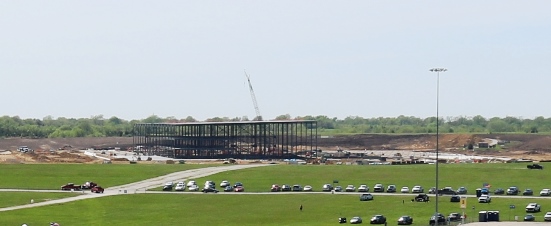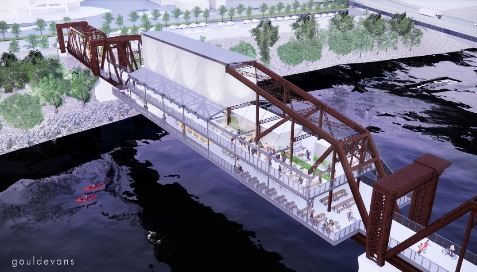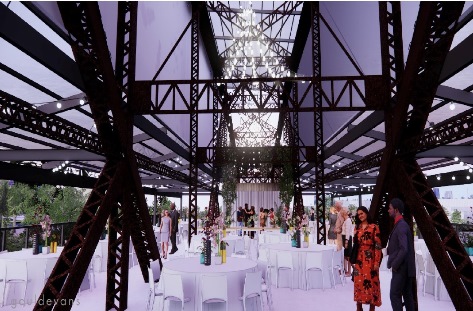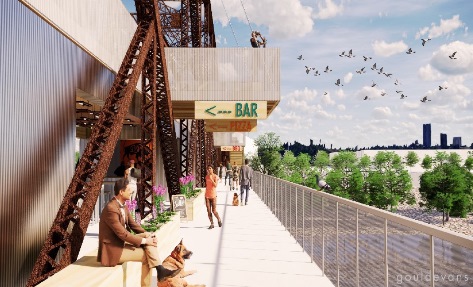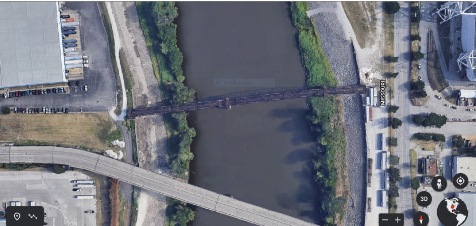WSU study: Expect $2.5B annual impact if manufacturing giant lands in Kansas
by Tim Carpenter, Kansas Reflector
Topeka — The clock is ticking on consideration by the Kansas Legislature of an extraordinary economic development incentive plan recommended by Gov. Laura Kelly to improve prospects of landing a major manufacturer expected to inject $2.5 billion annually into the state’s economy.
Kansas survived a review process that began 10 months ago to become one of two state finalists for the project — no company name, yet — that a Wichita State University study showed could create thousands of jobs through corporate investment of $4 billion and a package of government incentives. It would deliver an estimated 4,000 direct jobs and have a total employment impact of 7,800 jobs tied to $440 million in annual labor income. There could be a temporary expansion of 16,500 jobs.
The manufacturing plant’s estimated output at full production — think of an operation consuming 3 million square feet of building space — would be $1.8 billion annually, according to modeling by WSU’s Center for Economic Development and Business Research.
Parts of the WSU report were redacted to conceal identity of the prospective company, but the document noted Kansas had an established business sector in the targeted manufacturing field with the second-highest concentration of employment and wages in the nation.
For those engaged in guess work, Kansas officials said the target of the competition wasn’t Boeing and the rival state wasn’t Missouri.
“We finally have a chance to not only catch up to our competitor states, but beat them and supercharge the rate of growth in our state by landing this whale of a project,” said David Toland, who serves as lieutenant governor and as secretary of the Kansas Department of Commerce.
The Kelly administration recommended the Legislature efficiently finish work this week on an economic incentive bill aiming financial support at companies making a minimum investment in Kansas of $1 billion over a five-year period. The Attracting Powerful Economic Expansion Act, or APEX, would feature comparable tax benefits for suppliers with $10 million or more in annual sales to the manufacturing giant.
“It’s a much larger opportunity than anything the state has seen in its history as far as it being a realistic possibility for the state to win it,” Toland said in an interview. “We’ve been encouraging a clean bill that moves swiftly and gets to the governor’s desk this week so we can put forth an offer that will beat our competitor.”
The state’s final bid would need to be submitted in the first week of February, Toland said, so the company could make a site selection later in the month.
Incentive bill on the clock
The legislation would offer the megaproject company a 15% investment tax credit, reimbursement of up to 10% of payroll costs for up to 10 years and a 100% sales tax exemption on construction materials. A separate 50% property tax incentive would be available to the manufacturing company and up to five of its supplier companies if participating in a foreign trade-zone program, assuming local governments consented.
In addition, up to 50% of new employee training and education costs up to $5 million annually would be reimbursed to both manufacturing and supplier companies.
The supplier companies would score a 15% investment tax credit, retain a maximum of 65% of payroll withholding tax for 10 years and also qualify for the training reimbursement as well as the partial property tax exemption and full sales tax exemption on construction.
The package crafted by the Kelly administration was introduced last week in the Senate Commerce Committee. It would target employers in advanced manufacturing, aerospace, logistics, food, agriculture and technical services. Hearings in the Senate committee revealed support for the bill from the politically influential Kansas Chamber and backing among local chambers of commerce.
Eric Stafford, the main lobbyist for the Kansas Chamber, said expansion of gross domestic product in Kansas had lagged competitor states for years. The state also has endured a decades-long decline in population as young adults moved to other states for better jobs, he said.
“Many of us have talked over and over and over about wanting to grow the state and wanting to attract investment,” he told members of the Kansas Senate. “You have a great opportunity to grow. Hopefully, this is a good catalyst of things to come in the future.”
Pointed comments from conservative lawmakers about the bill exposed reservations about writing a large check to lure the company to Kansas.
Sen. Virgil Peck, R-Havana, said he was concerned the Legislature was being pressured to vote on Senate Bill 347 abruptly. He couldn’t recall such a compressed timeline for major legislation in his 14-session career at the statehouse.
“Is there a program that would be too much for the Kansas Chamber?” said Sen. Mark Steffen, R-Hutchinson. “Or, are they all acceptable to the Chamber?”
Stafford said a key metric would be return on the investment made on behalf of taxpayers. The state’s existing economic development tools are effective, he said, but insufficient to compete with other states to attract businesses willing to drop billions of dollars on a production plant. In a perfect world the states, counties and cities wouldn’t be in a bidding war for jobs, he said.
“We don’t live in a perfect world,” Stafford said. “Until all 50 states agree to disarm … we need to have incentive packages available for economic development investment purposes that are attractive and competitive.”
‘An unfair advantage’
In the Capitol, election-year politics play a role in consideration of important legislation. There are questions about whether passage of the bill could be jeopardized by lawmakers unwilling to risk giving Kelly a re-election boost in November.
Instead of rejecting the bill outright, it’s also possible the House and Senate could bundle megaproject legislation with tax reforms the Democratic governor might find distasteful. A veto by Kelly could create an unbreakable logjam that failed to adhere to the company’s site-selection deadline.
Dave Trabert, representing the Kansas Policy Institute, said the organization opposed the Kelly administration’s economic development legislation because it would hand hundreds of millions of dollars to the megaproject and associated businesses. The subsidies would be unfair to other Kansas businesses, he said.
“A subsidized business can offer better prices and pay higher wages, which gives it an unfair advantage,” he said. “Subsidies are part of the reason Kansas has the highest effective tax rates on mature businesses.”
Trabert said local and state government had approved wave after wave of subsidies to Kansas businesses for years, but the state still trailed the nation on job creation and GDP. The bill would give the state Department of Commerce too much discretion and too little protection for taxpayers, he said.
“After two years of overbearance by government officials in their handling of the COVID situation,” Trabert said, “Kansans need a lot more protection and a lot less discretion from government.”
Trabert was the only person to register opposition to the bill during the Senate Commerce Committee’s hearing, while 16 economic development organizations endorsed the legislation.
Eric Brown, president of the Salina Area Chamber of Commerce, said movement of large companies to bring manufacturing capacity to Kansas from overseas could benefit existing manufacturing companies by avoiding supply problems that emerged during the COVID-19 pandemic.
He said Salina would welcome the opportunity to be a potential partner location for suppliers trailing the megaproject.
“As the country looks to repatriate supply chain and manufacturing, it is imperative that the state of Kansas looks to position itself as a viable state to host these high-skilled and good paying jobs,” said John Jenks, director of policy for the Kansas City Area Chamber of Commerce. “The KC Chamber has been a staunch supporter of fiscally responsible and data-informed uses of incentives and believes this bill fits the model.”
Matthew Godinez, executive director of the 12-county Southeast Kansas Regional Planning Commission, said the organization supported the APEX legislation.
“APEX is a measure that strikes a reasonable balance between competitiveness, accountability, transparency and doing what is best for the economic future of Kansas,” he said
Kansas Reflector stories, www.kansasreflector.com, may be republished online or in print under Creative Commons license CC BY-NC-ND 4.0.
See more at https://kansasreflector.com/2022/01/25/kelly-legislature-wrestling-economic-and-political-forces-on-4-billion-development-project/

